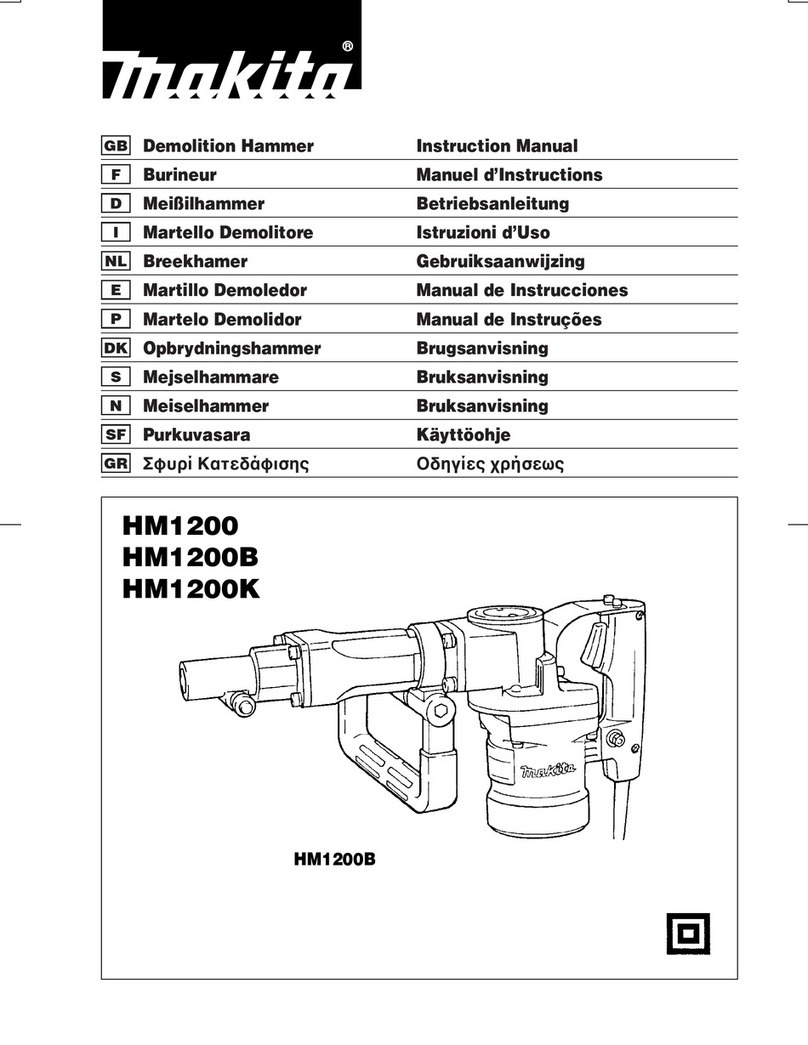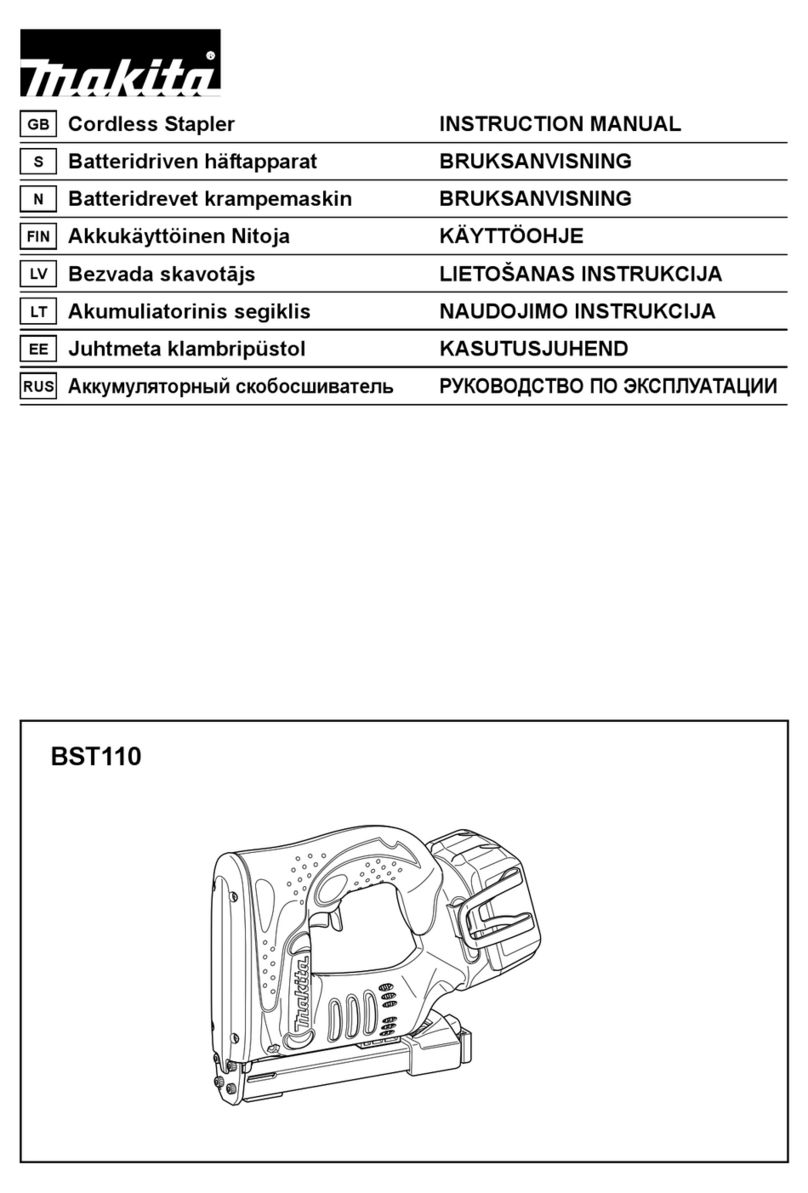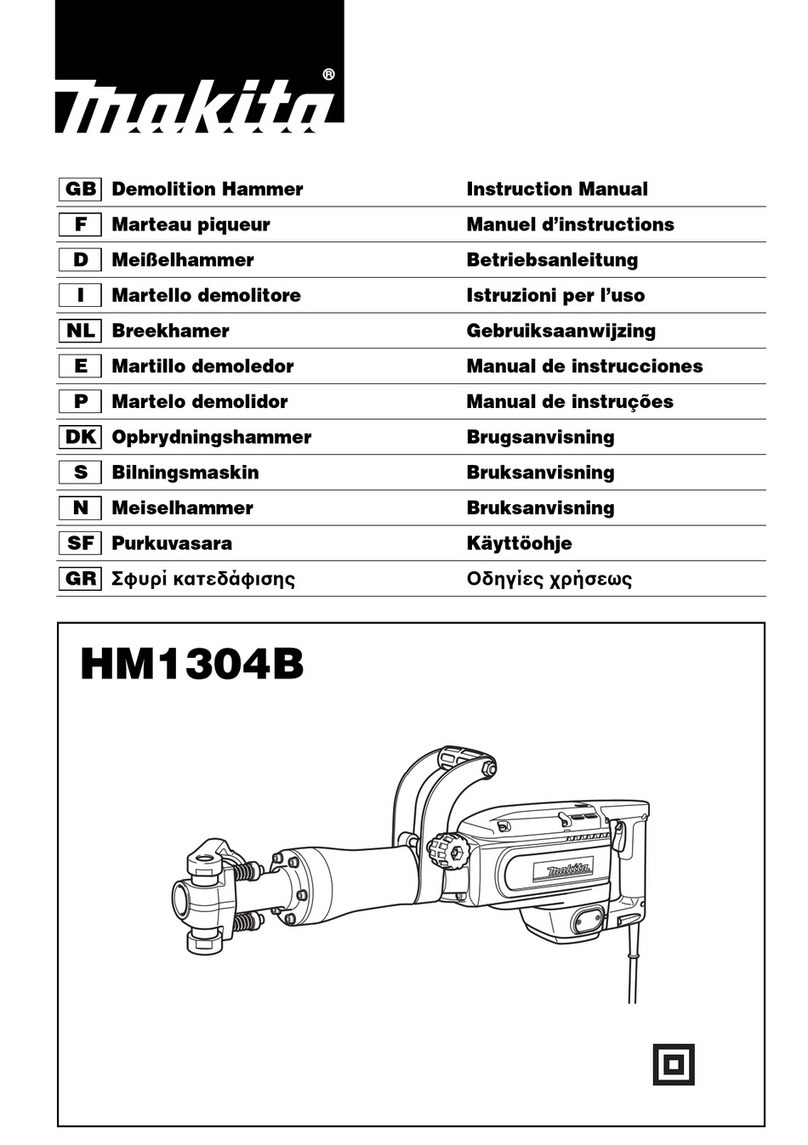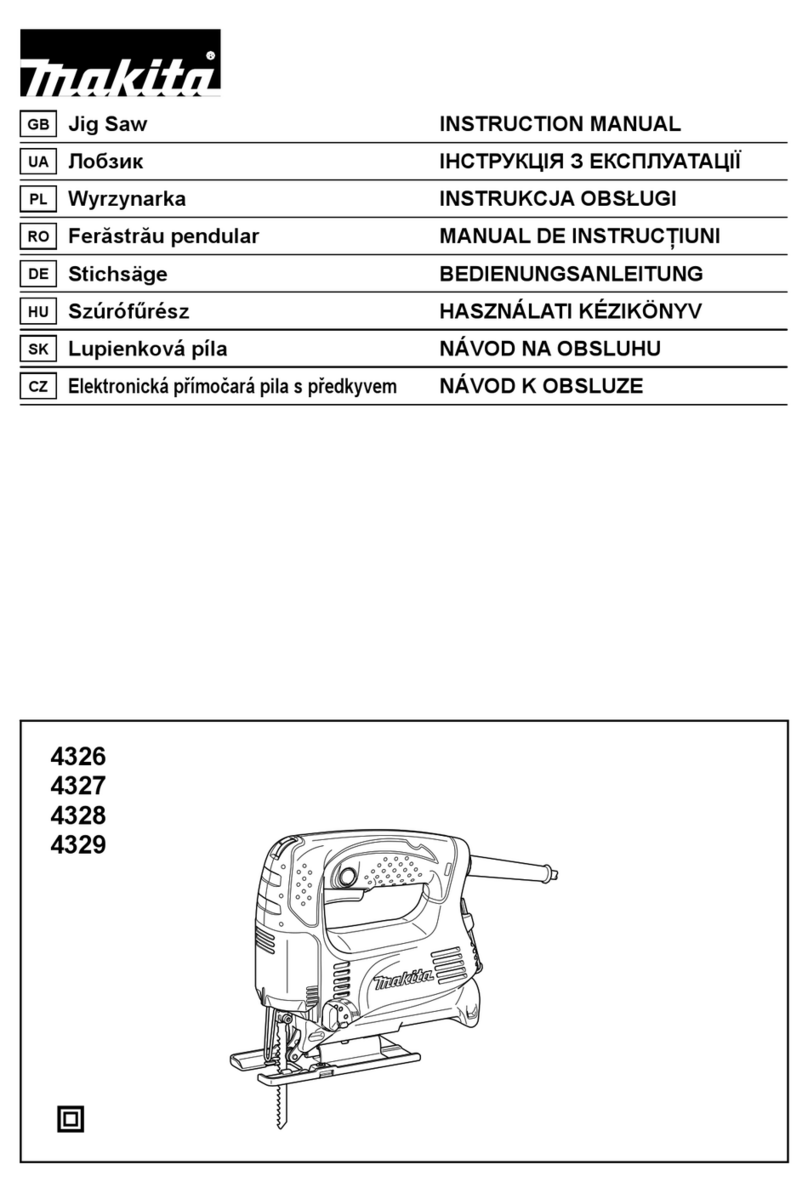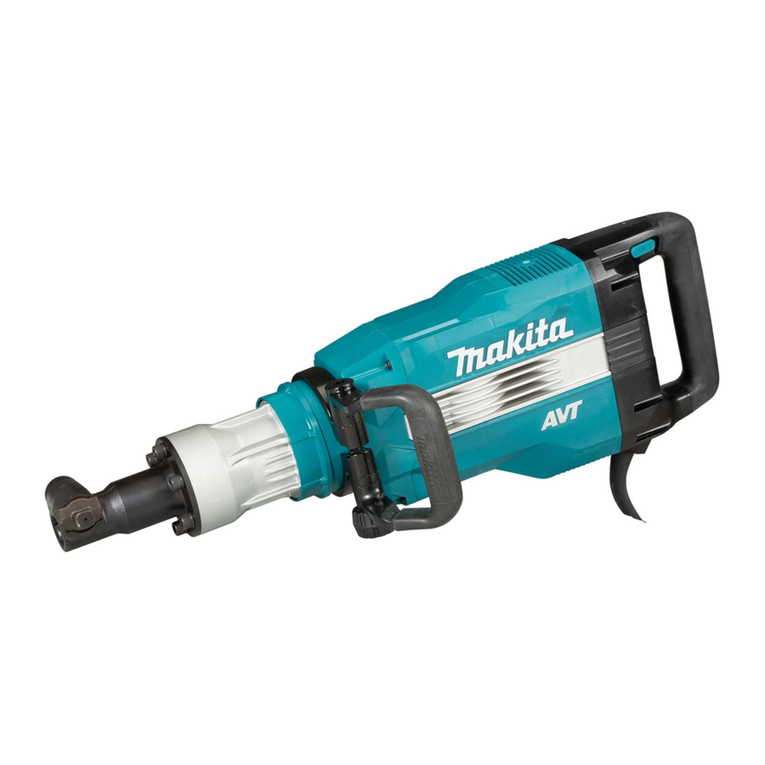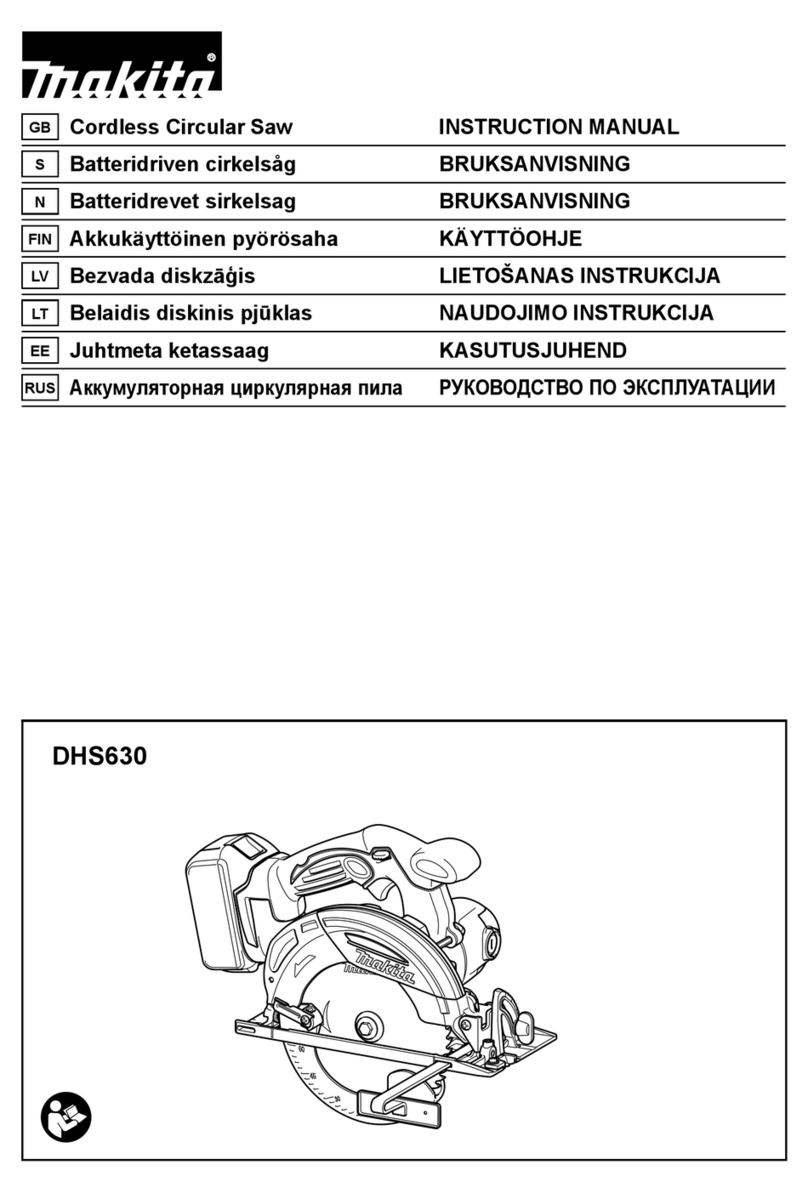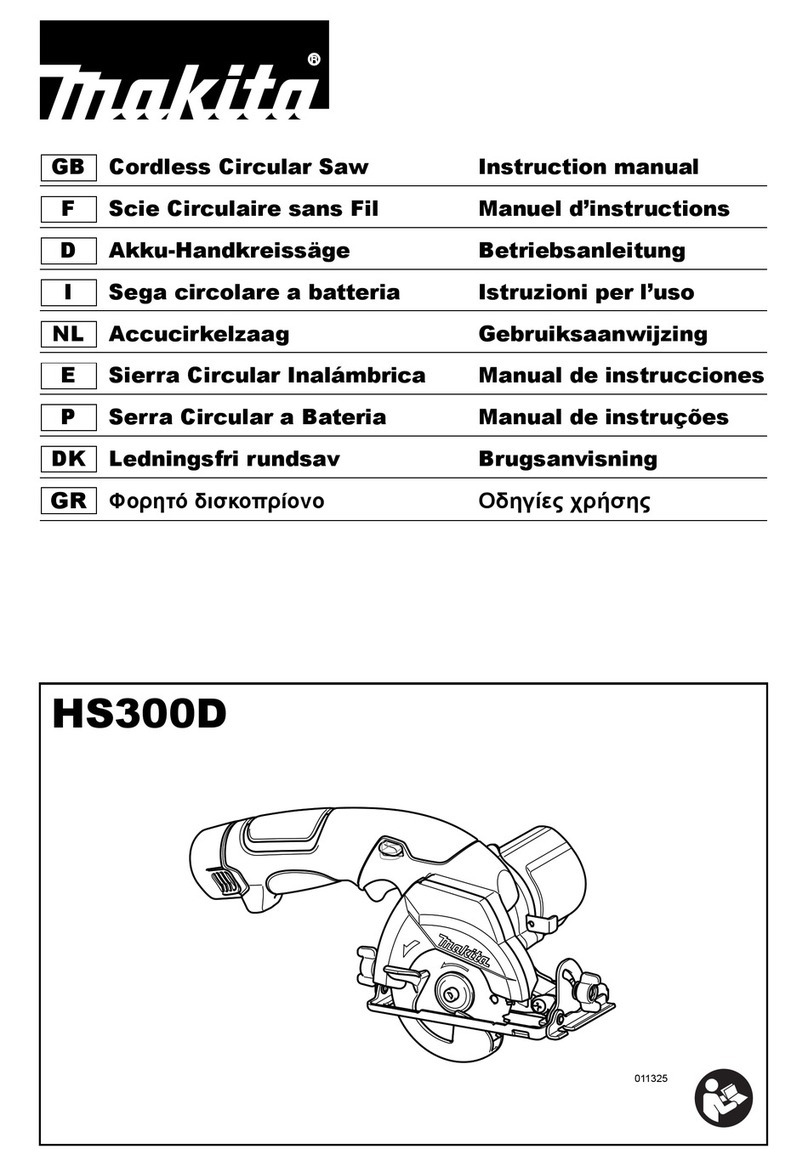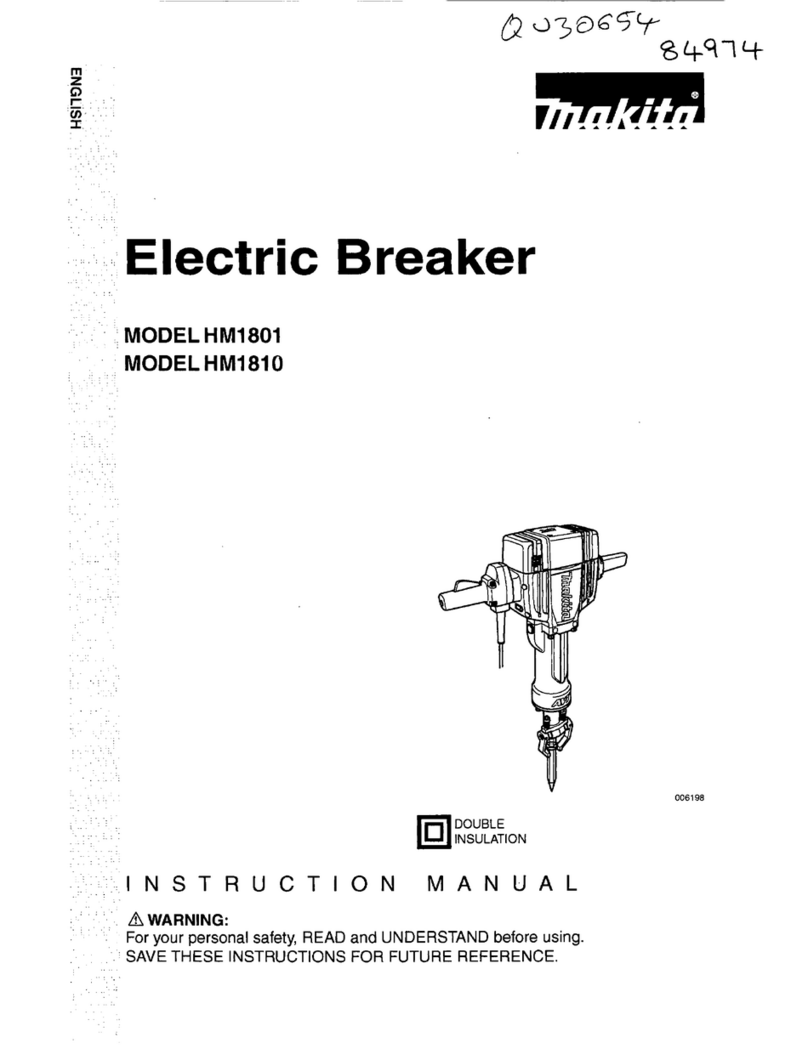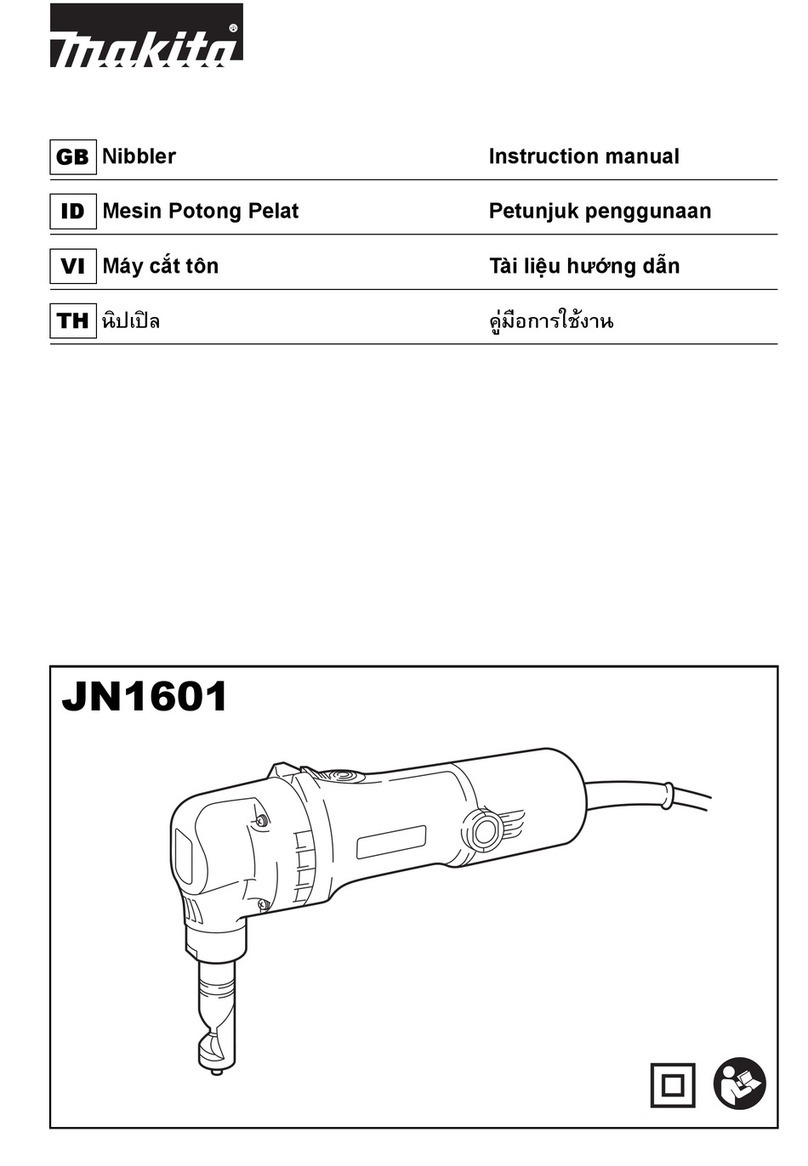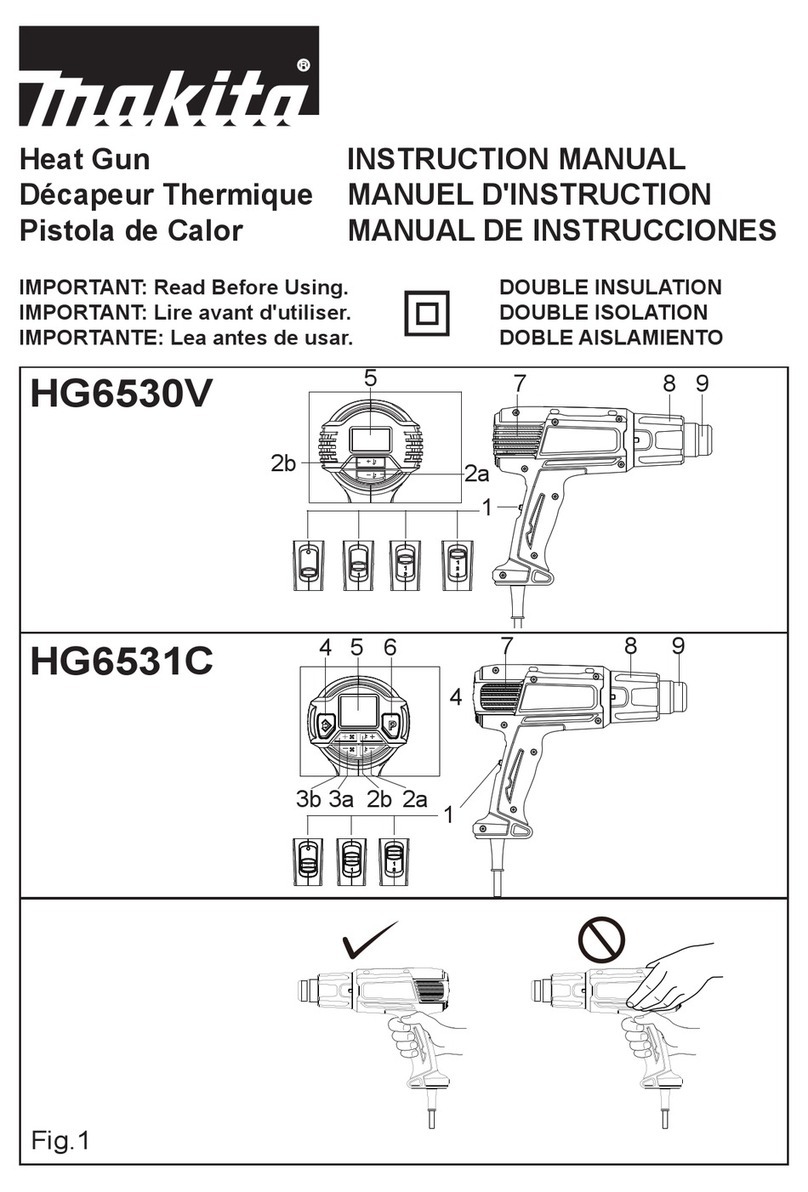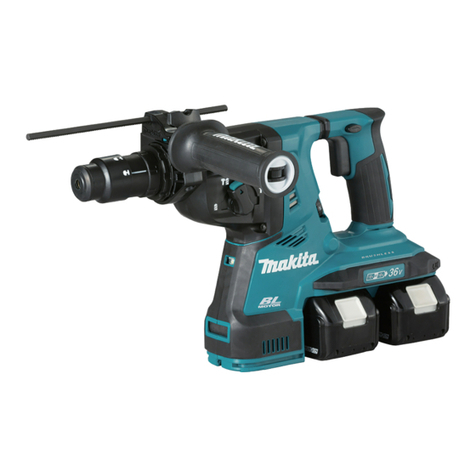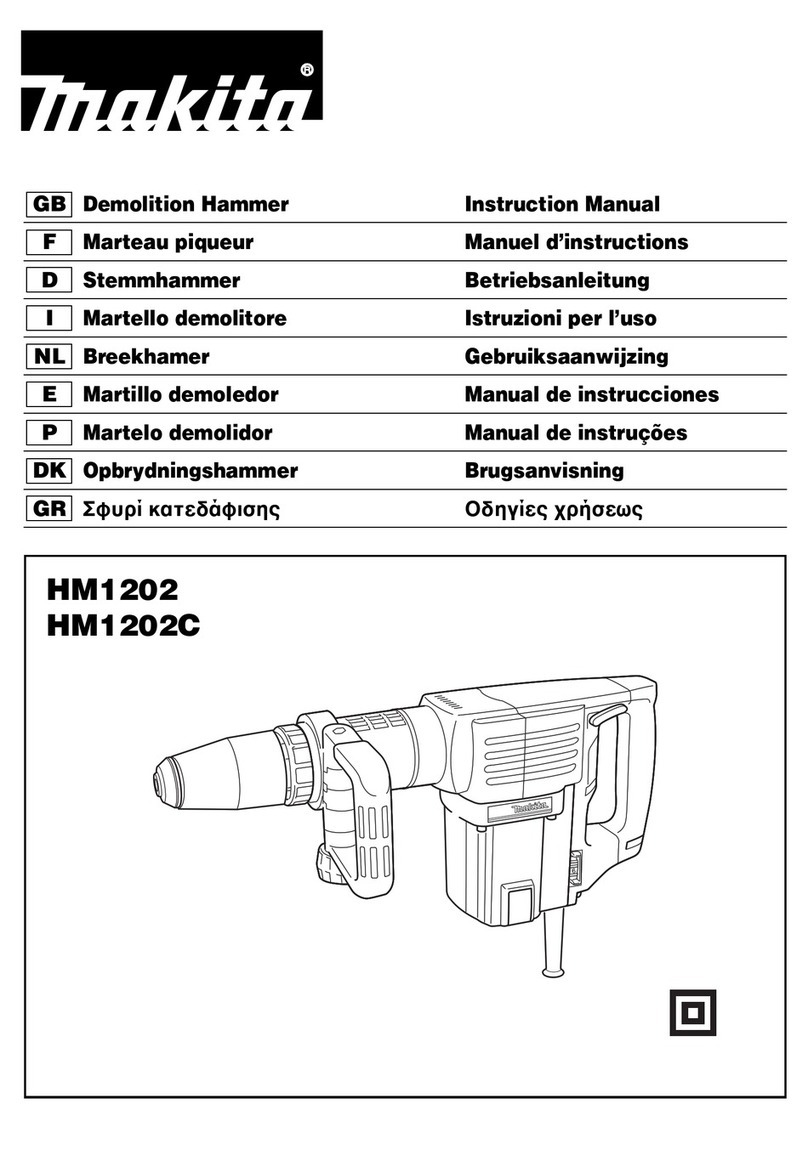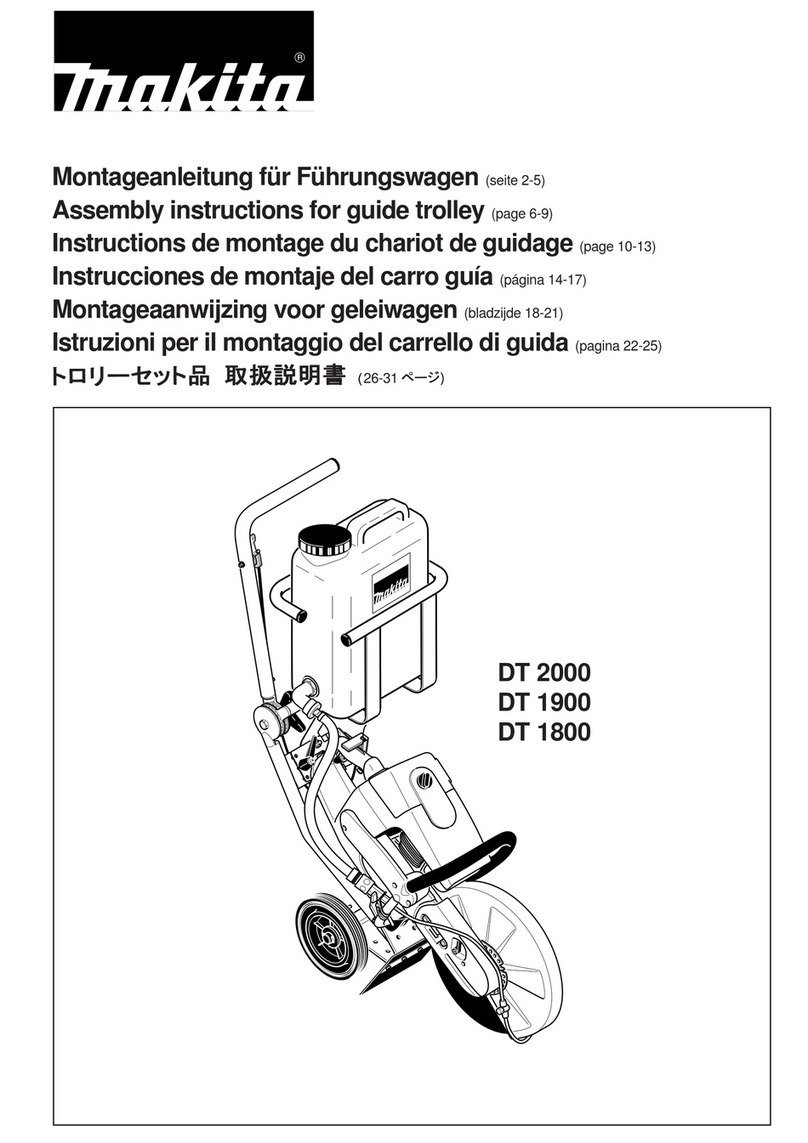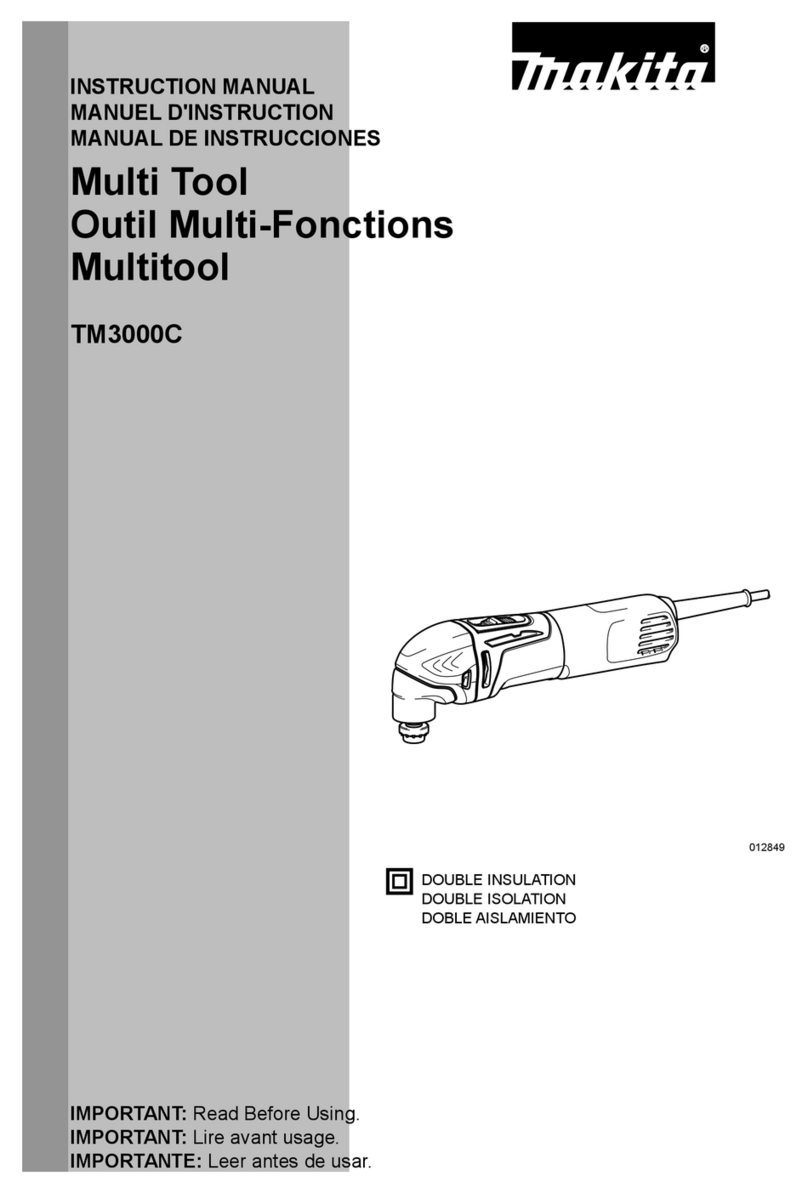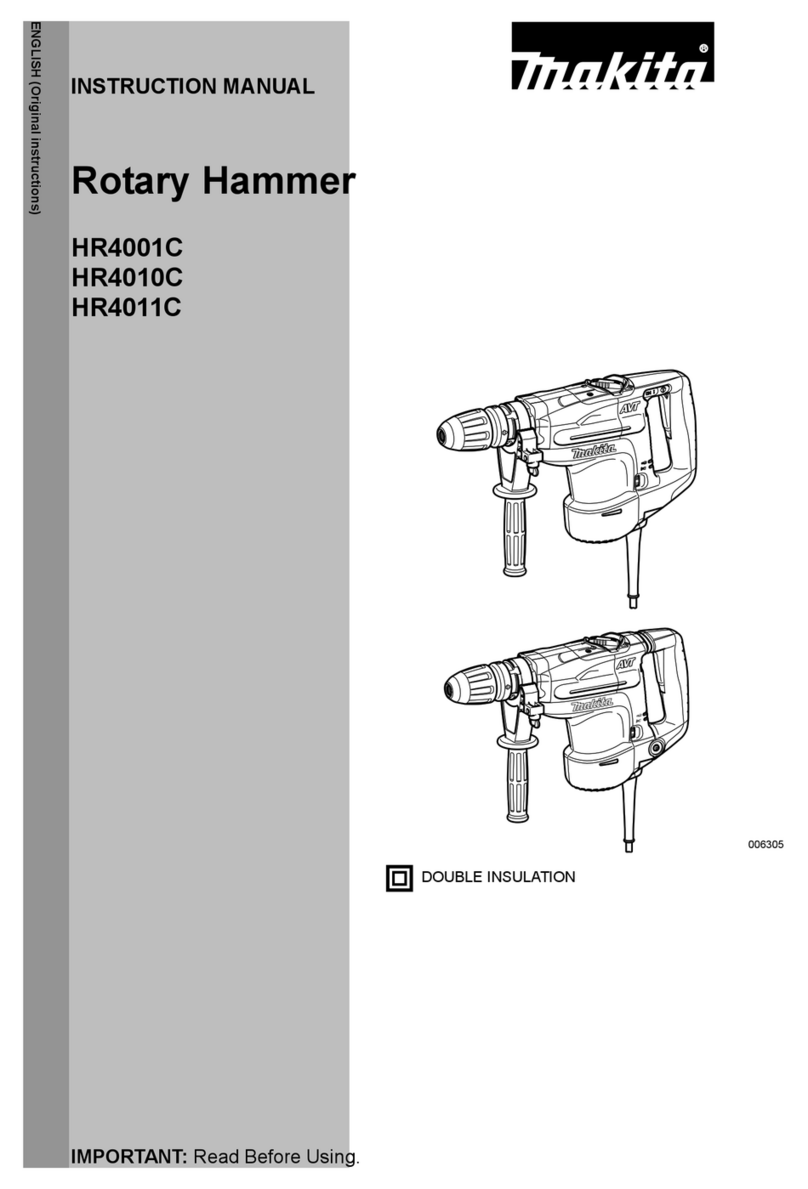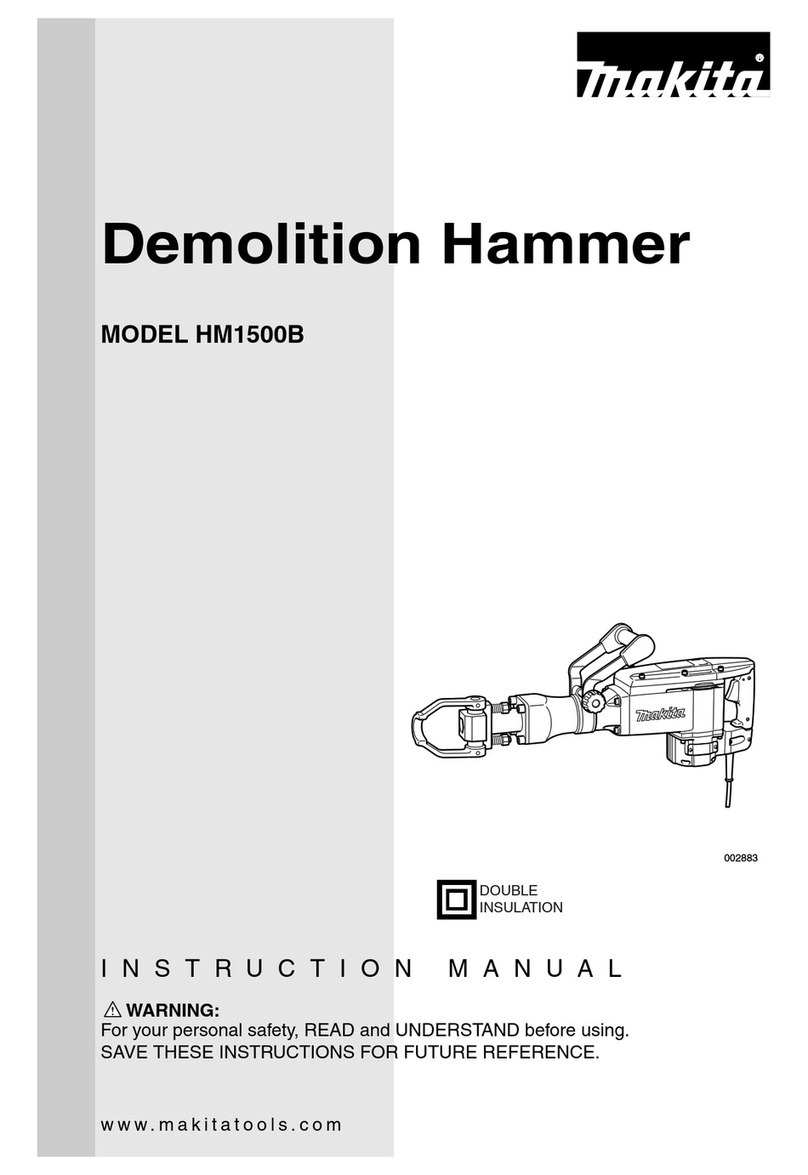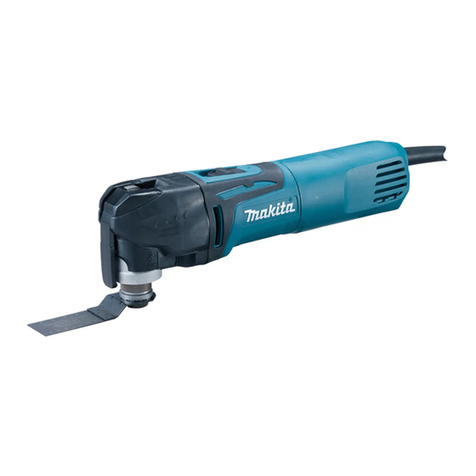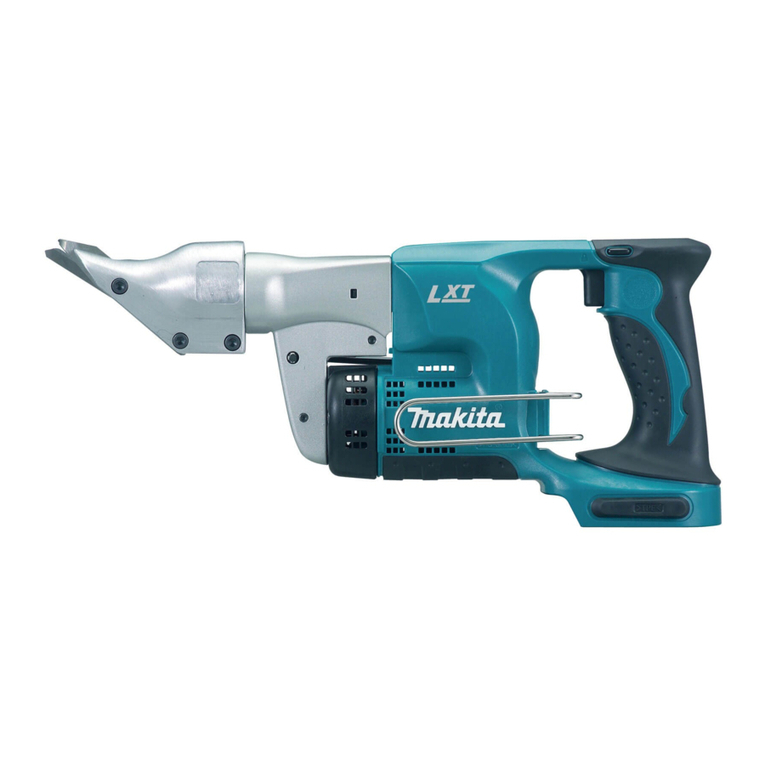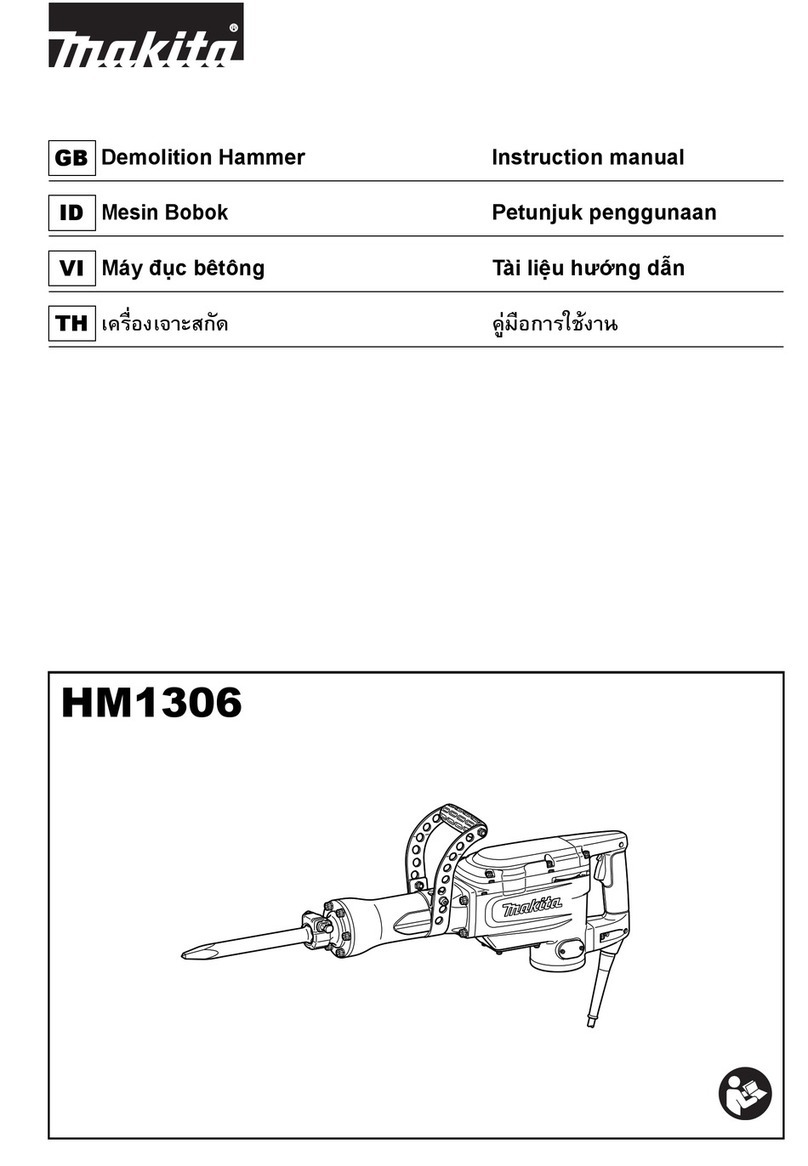
22. Have your tool repaired by an expert
This electric appliance is in accordance with the
relevant safety rules. Repairing of electric appli-
ances may be carried out only by experts other-
wise it may cause considerable danger for the
user.
ADDITIONAL SAFETY RULES ENB011-2
1. Hold the tool firmly.
2. Secure the workpiece firmly.
3. Keep hands away from moving parts.
4. Edges and chips of the workpiece are sharp.
Wear gloves. It is also recommended that you
put on thickly bottomed shoes to prevent
injury.
5. Do not put the tool on the chips of the work-
piece. Otherwise it can cause damage and
trouble on the tool.
6. Do not leave the tool running. Operate the tool
only when hand-held.
7. Always be sure you have a firm footing. Be
sure no one is below when using the tool in
high locations.
8. Do not touch the blade or the workpiece imme-
diately after operation; they may be extremely
hot and could burn your skin.
9. Avoid cutting electrical wires. It can cause
serious accident by electric shock.
SAVE THESE INSTRUCTIONS.
OPERATING INSTRUCTIONS
Switch action (Fig. 1)
CAUTION:
Before plugging in the tool, always check to see that
the switch trigger actuates properly and returns to the
‘‘OFF’’ position when released.
To start the tool, simply pull the trigger. Tool speed is
increased by increasing pressure on the trigger.
Release the trigger to stop. For continuous operation,
pull the trigger and then push in the lock button. To
stop the tool from the locked position, pull the trigger
fully, then release it.
Hook (Fig.2&3)
The hook is convenient for temporary hanging the
tool. When using the hook, pull it out in ‘‘A’’ direction
and then push it in ‘‘B’’ direction to secure in place.
When not using the hook, return it back to its initial
position by following the above procedures in reverse.
Replacement of blades
CAUTION:
•Always be sure that the tool is switched off and
unplugged before replacement of the blades.
•Never remove the blades with bare hands. Wear
gloves. Otherwise it can cause injury.
Removing cutting head (Fig. 4)
Use the hex wrench to loosen the three screws which
secure the cutting head. Pull the cutting head straight
out to remove it with turning it left and right alternately.
Removing shear blades (Fig. 5)
Remove the three screws which hold the cutting
head. When removing the second screw, be careful
not to fall the sleeve. Then the blades can be removed
easily. When removing the blades, hold the blades
and the sleeve so that they do not fall from the cutting
head.
Installing shear blades (Fig. 6)
Install the sleeve and tighten the three screws after
inserting the center blade, side blade L & R into the
cutting head. In this process, the screw heads should
be protruding 2–3mmfrom the cutting head surface.
If you will tighten the screws excessively, the cutting
head cannot be installed to the tool.
Installing cutting head (Fig. 7)
CAUTION:
Secure the cutting head firmly. Otherwise it can rotate
during operation and can cause serious injury.
Insert the cutting head into the tool with turning it left
and right alternately. Then tighten the three screws
with the hex wrench.
Operation (Fig. 8)
CAUTION:
Edges and chips of the workpiece are sharp. Wear
gloves. Otherwise it can cause injury.
Secure the workpiece firmly. Move the tool forward
keeping the side blades flush with the workpiece
surface.
Adjusting shear blade (Fig. 9)
Adjust the side blade L so that the curl of waste
material does not contact the cutting head or the
workpiece. Use the hex wrench to loosen the three
screws which hold the cutting head. Move the side
blade L back and forth to adjust it. Then tighten the
three screws with the hex wrench.
MAINTENANCE
CAUTION:
Always be sure that the tool is switched off and
unplugged before carrying out any work on the tool.
Lubrication (Fig. 10)
Before operation, lubricate the contact point of the
center blade and the side blades R/L. And, also
lubricate the point of the center blade near the cutting
head. To keep good cutting performance, use lubri-
cant from time to time during operation.
To maintain product safety and reliability, repairs,
maintenance or adjustment should be carried out by a
Makita Authorized Service Center.
JS1300 (E) (’100. 7. 19)
5

